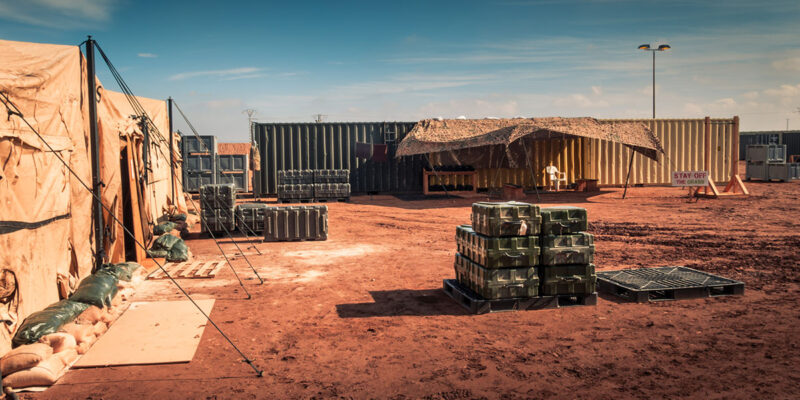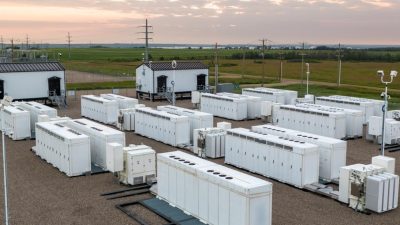Historical Use of Asbestos in Military Housing
Asbestos was widely used in military housing for many years due to its excellent insulation and fire-resistant properties. The military utilized asbestos in various materials, including:
- Insulation for walls and ceilings
- Piping and electrical wiring
- Boiler and engine room insulation
This use continued until the dangers of asbestos became known in the 1970s, leading to a gradual phase-out in new constructions.
Common Asbestos-Containing Materials
In military housing, several materials are known to contain asbestos, which can pose serious health risks. Common sources include:
- Floor tiles and adhesives
- Roofing materials
- Textiles used in insulation and fireproofing
These materials can still be found in many older military homes, creating ongoing exposure risks for residents.
Current State of Asbestos in Military Housing
Despite the ban on new asbestos use, many military housing units still contain asbestos. Key points include:
- Over 300,000 family housing units may still have asbestos from original construction.
- The Department of Defense has been slow to address these hazards, leading to concerns about safety.
- Many residents are unaware of the presence of asbestos, which can lead to unintentional exposure.
Understanding the history and current state of asbestos in military housing is crucial for addressing the health risks faced by veterans and their families.
Health Risks Associated with Asbestos Exposure
How Asbestos Affects the Lungs
Asbestos is a harmful material that can cause serious lung problems. When people breathe in asbestos fibers, these tiny particles can get stuck in the lungs. Over time, this can lead to:
- Asbestosis: A condition that causes scarring of the lung tissue, making it hard to breathe.
- Lung Cancer: A serious disease that can develop years after exposure.
- Mesothelioma: A rare cancer that affects the lining of the lungs and chest cavity.
Symptoms of Asbestos-Related Diseases
People exposed to asbestos may not notice symptoms right away. It can take many years for problems to show up. Common symptoms include:
- Persistent Cough: A cough that doesn’t go away.
- Shortness of Breath: Difficulty breathing, especially during physical activity.
- Chest Pain: Discomfort or pain in the chest area.
Long-Term Health Implications for Veterans
Veterans who were exposed to asbestos face serious long-term health risks. These can include:
- Increased Risk of Cancer: Veterans are more likely to develop lung cancer and other cancers related to asbestos.
- Chronic Respiratory Issues: Long-term breathing problems can affect daily life and activities.
- Emotional and Financial Strain: Dealing with serious health issues can lead to stress and financial difficulties due to medical costs.
Veterans Asbestos Lung Cancer Claims
Eligibility for Filing Claims
Veterans diagnosed with lung cancer due to asbestos exposure during their service may be eligible for compensation. To qualify, they typically need to:
- Provide medical records showing a diagnosis of lung cancer.
- Demonstrate a history of asbestos exposure while in the military.
- Submit a claim to the Department of Veterans Affairs (VA) or other relevant organizations.
Process of Filing a Claim
Filing a claim can be a straightforward process if veterans follow these steps:
- Gather all necessary documents, including medical records and service history.
- Complete the VA claim form, ensuring all information is accurate.
- Submit the claim to the VA and wait for a decision.
- If denied, veterans can appeal the decision or seek legal assistance.
Compensation and Benefits Available
Veterans diagnosed with lung cancer from asbestos exposure may receive various forms of compensation, such as:
- Monthly disability payments from the VA.
- Access to specialized medical treatments.
- Potential compensation from asbestos trust funds or lawsuits against manufacturers of asbestos products.
Asbestos in Different Military Branches
Asbestos exposure has been a significant issue across all branches of the U.S. military. Each branch has its own unique history and circumstances regarding asbestos use and exposure.
Asbestos Exposure in the Navy
- The U.S. Navy extensively used asbestos in ship construction, leading to high exposure levels for sailors.
- Key areas of risk included boiler rooms, engine rooms, and sleeping quarters.
- Many Navy veterans today suffer from asbestos-related diseases due to this exposure.
Asbestos Exposure in the Army
- Army personnel encountered asbestos in various settings, including barracks and maintenance facilities.
- Asbestos was commonly found in pipes, flooring, and roofing materials.
- Even after the military stopped using asbestos in the late 1970s, many Army bases still contain asbestos materials.
Asbestos Exposure in the Air Force
- The Air Force utilized asbestos in aircraft and base facilities, particularly for insulation.
- Mechanics and pilots were at risk while working on planes that contained asbestos components.
- Asbestos was used in heat shields, gaskets, and electrical wiring, posing health risks to those who served.
Asbestos Abatement and Mitigation Efforts
Challenges in Removing Asbestos
Removing asbestos from military housing is a complex task. Some of the main challenges include:
- Safety Risks: Disturbing asbestos can release harmful fibers into the air, posing health risks to workers and residents.
- Cost: The process of safely removing asbestos can be expensive, making it difficult to fund.
- Regulations: Strict laws and guidelines must be followed, which can slow down the removal process.
Current Mitigation Strategies
To address the risks associated with asbestos, several strategies are being implemented:
- Regular Inspections: Military housing is regularly inspected to identify areas where asbestos is present.
- Encapsulation: Instead of removing asbestos, some areas are sealed off to prevent exposure.
- Training: Workers are trained on how to handle asbestos safely and what precautions to take.
Role of the Department of Defense
The Department of Defense (DoD) plays a crucial role in managing asbestos hazards:
- Policy Development: The DoD is working on creating policies to better manage asbestos in military housing.
- Coordination: They direct officials to work together on asbestos abatement efforts.
- Funding: The DoD allocates funds for asbestos removal and safety measures in military housing.
Legal and Financial Assistance for Affected Veterans
VA Benefits for Asbestos Exposure
Veterans who have been exposed to asbestos during their service may qualify for various benefits through the Department of Veterans Affairs (VA). Here are some key points:
- Medical Coverage: Veterans can receive treatment for asbestos-related illnesses, including lung cancer and mesothelioma.
- Monthly Compensation: Eligible veterans may receive monthly payments to help cover living expenses.
- Free Medical Testing: The VA offers free medical evaluations for veterans concerned about asbestos exposure.
Legal Options for Compensation
If veterans are diagnosed with asbestos-related diseases, they may have legal avenues to pursue compensation:
- Filing a Claim: Veterans can file claims against companies that manufactured asbestos products used in military settings.
- Asbestos Trust Funds: Many companies have set up trust funds to compensate victims of asbestos exposure. Veterans can access these funds without going to court.
- Lawsuits: Veterans may also consider filing lawsuits for additional compensation, which can often exceed $1 million.
Resources for Financial Assistance
Veterans seeking help can access various resources:
- Veterans Support Groups: These groups provide information and support for navigating benefits and legal claims.
- Legal Aid Services: Many organizations offer free or low-cost legal assistance to veterans pursuing claims.
- Community Programs: Local community resources may provide financial assistance for medical bills and other expenses related to asbestos exposure.
Case Studies of Affected Veterans
Navy Veterans and Asbestos Exposure
- Jeff Burdine: A Navy veteran from Salem, Ohio, served on the USS Neosho during the Korean War. He was diagnosed with asbestosis in 2012 after cleaning steam pipes wrapped in asbestos insulation. He believed his Navy service was the only source of his exposure, making him eligible for compensation from the U.S. Department of Veterans Affairs.
Army Veterans and Asbestos Exposure
- David Cutts: A Marine Corps veteran from New Jersey, Cutts was diagnosed with mesothelioma in 2005, nearly 40 years after serving in Vietnam. He suspects his exposure came from a Navy ship used to transport troops, highlighting the long-term risks of asbestos in military operations.
Air Force Veterans and Asbestos Exposure
- Allen Johnson: A veteran from Smithville, Utah, Johnson served aboard the USS Randall, where he worked in an engine room filled with asbestos dust. After being diagnosed with mesothelioma, he began receiving monthly compensation of $894 in 2004, which he felt was insufficient for the challenges he faced due to his illness.
Secondhand Asbestos Exposure in Military Families
Risks to Family Members
Many military families lived in close quarters with service members who worked around asbestos. This can lead to secondhand exposure, which poses serious health risks. Family members may be at risk if:
- A service member brought home asbestos dust on their clothes.
- Children played in areas where asbestos was present.
- Family members helped with home repairs or maintenance without knowing about the dangers.
Preventive Measures
To protect family members from asbestos exposure, it is important to take certain steps:
- Regular Cleaning: Keep living spaces clean to reduce dust and potential asbestos fibers.
- Awareness: Educate family members about the risks of asbestos and how to avoid exposure.
- Professional Help: If asbestos is suspected in the home, hire professionals for safe removal.
Support for Affected Families
Families affected by asbestos exposure can find support through various resources:
- Support Groups: Join groups that focus on asbestos-related health issues.
- Medical Assistance: Seek medical advice for any symptoms related to asbestos exposure.
- Community Resources: Look for local organizations that offer help and information for affected families.
Global Impact of Asbestos Use in Military Operations
Asbestos Use in Military Operations Worldwide
During the 20th century, asbestos was widely used in military operations due to its excellent insulation and fire-resistant properties. The military utilized asbestos in various applications, including:
- Housing insulation: Used in barracks and family housing.
- Piping and electrical wiring: Insulated pipes and wires to prevent heat damage.
- Engine room insulation: Protected critical machinery from heat.
Ongoing Risks and Concerns
Despite the known dangers of asbestos, many military installations still contain it. Some key points include:
- Existing military housing: Over 300,000 family housing units may still have asbestos from original construction.
- Lack of records: Many military bases do not have accurate records of asbestos locations, making it hard to assess risks.
- Health risks: Asbestos exposure can lead to serious health issues, including lung cancer and mesothelioma.
Current Mitigation Efforts
The Department of Defense (DoD) is working to address asbestos hazards. Their strategies include:
- Policy updates: Revising health and safety policies to better manage asbestos risks.
- Abatement coordination: Directing officials to work on asbestos removal and management.
- Awareness campaigns: Educating military personnel and families about the dangers of asbestos exposure.
Preventive Measures for Future Military Housing
Designing Asbestos-Free Housing
To ensure the safety of military families, future housing should be designed without asbestos. This can be achieved by:
- Using modern insulation materials that are safe and effective.
- Implementing strict guidelines for construction to avoid any asbestos use.
- Regularly reviewing and updating building codes to reflect the latest safety standards.
Policy Changes and Recommendations
The military must adopt new policies to protect residents from asbestos exposure. Key recommendations include:
- Establishing a clear ban on asbestos in all military housing projects.
- Creating a comprehensive plan for inspecting existing housing for asbestos.
- Ensuring that all construction workers are trained to recognize and handle hazardous materials safely.
Future Research and Development
Investing in research is crucial for finding better alternatives to asbestos. This includes:
- Funding studies on new insulation technologies that are both safe and cost-effective.
- Collaborating with scientists and engineers to develop innovative materials.
- Encouraging partnerships with private companies to explore sustainable building practices.
Historical Overview of Asbestos in the Military
Early Adoption of Asbestos
Asbestos became popular in the military during the 20th century due to its excellent insulation and fire-resistant qualities. The military used it extensively for various purposes, including:
- Housing insulation
- Piping and electrical wiring
- Boiler and engine room insulation
- Heat shields and brake pads
- Ropes and cabling
Key Periods of Asbestos Use
The military’s reliance on asbestos peaked during significant conflicts, particularly:
- World War II
- The Korean War
- The Vietnam War
During these times, asbestos was used in constructing ships, tanks, and barracks, putting many service members at risk.
Transition Away from Asbestos
Awareness of the dangers of asbestos grew in the 1970s, leading to a decline in its use. However, many military housing units still contain asbestos, as removal is complex and costly. The Department of Defense has been working on plans to manage and mitigate these hazards, but challenges remain in ensuring the safety of veterans and their families.
Support Networks for Veterans with Asbestos-Related Diseases
Veterans who have been affected by asbestos-related diseases can find various support networks to help them navigate their challenges. These networks provide essential resources and assistance to ensure veterans receive the care and benefits they deserve.
Veterans Support Groups
- Peer Support: Many veterans find comfort in connecting with others who have similar experiences. Support groups offer a safe space to share stories and coping strategies.
- Emotional Assistance: These groups often provide emotional support, helping veterans deal with the stress and anxiety that can come from their health issues.
- Information Sharing: Members can exchange valuable information about treatment options and navigating the healthcare system.
Medical Assistance Programs
- Access to Specialists: Programs often help veterans connect with doctors who specialize in asbestos-related diseases, ensuring they receive the best care.
- Financial Aid: Some medical assistance programs offer financial help for treatments, making healthcare more accessible.
- Transportation Services: Many organizations provide transportation to medical appointments, easing the burden on veterans who may have mobility issues.
Community Resources
- Local Organizations: Many communities have local organizations dedicated to helping veterans. These can include legal aid, housing assistance, and job placement services.
- Educational Workshops: Workshops can educate veterans about their rights and available benefits, empowering them to seek the help they need.
- Online Resources: Numerous websites and forums provide information and support, allowing veterans to connect with others from the comfort of their homes.













Comments